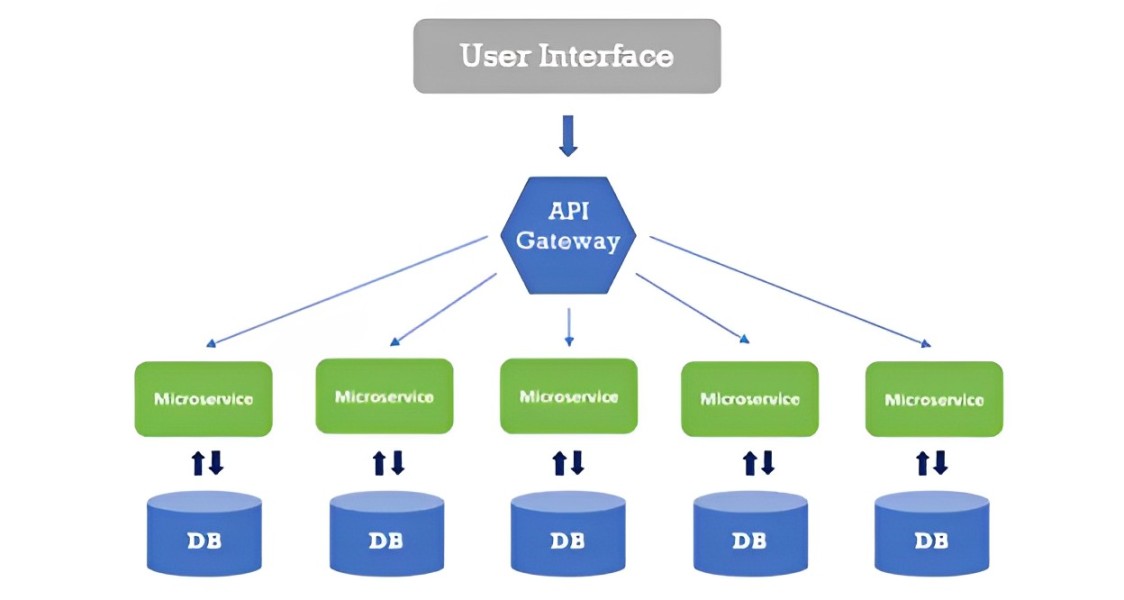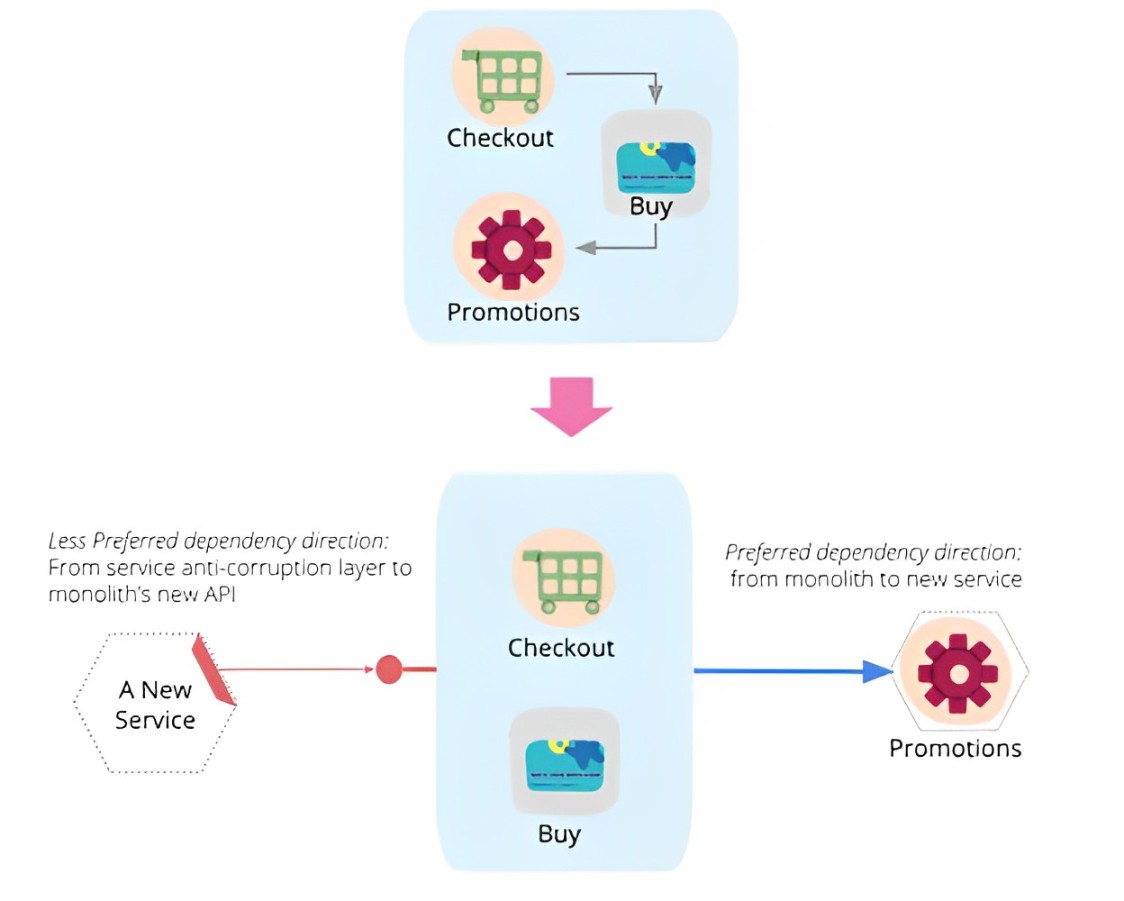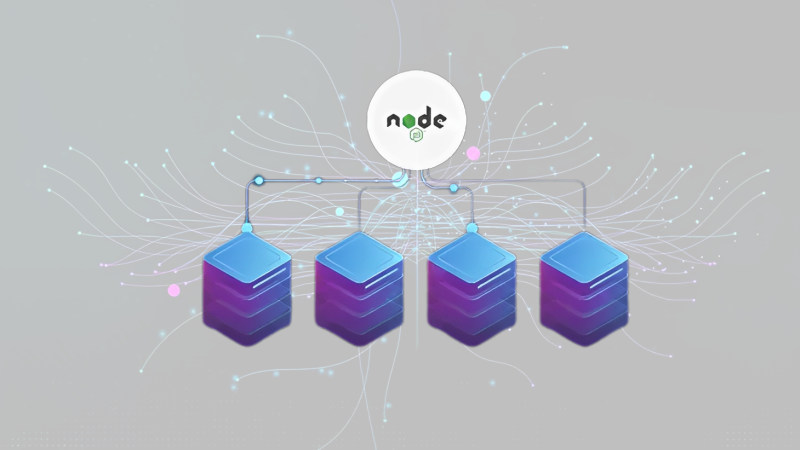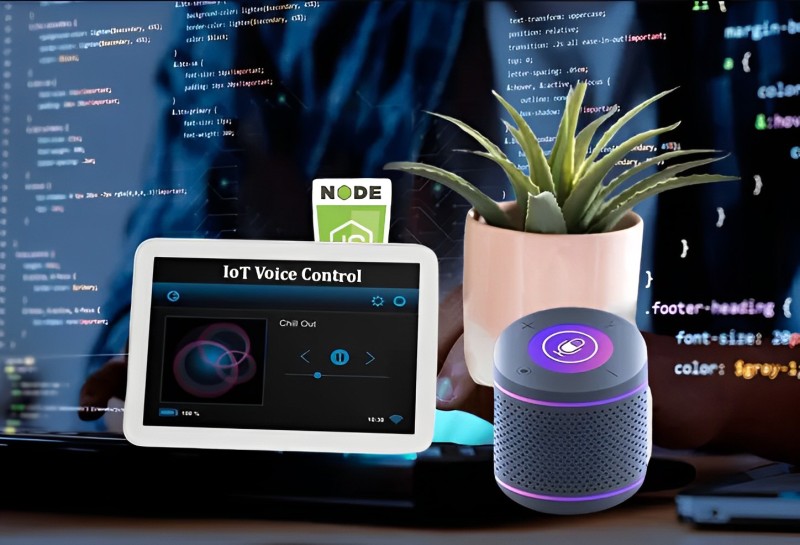Developing Node.js with Microservices
Monolithic Node.js applications can turn into an unmaintainable mess as they scale. Is there a better way to manage complexity as your app grows? Shifting to a Microservices architecture can make development far easier and flexible. But when done poorly, it can also create new headaches.
This in-depth guide explores strategies for smoothly transitioning Node.js apps into independent Microservices development.
Follow along to evolve your architecture and unlock the benefits of Microservices!

What are Microservices?
Microservices are an architectural approach for developing cloud applications. The idea is to break large, complex software projects into smaller, independent modules that each focus on doing one thing well.
Think of a Microservice as a mini-application that handles one specific feature or capability, independent of other code.
For example, one Microservice might handle just user authentication. Another might focus only on sending emails.
Instead of one giant monolithic application doing everything, you break it into smaller, focused services.
This makes development and updating features much easier since each Microservice has a single job. A small team can own and manage one service end-to-end.
Microservices keep things simple by splitting gigantic applications into bite-sized mini-applications that do one thing exceptionally.
Benefits of using Microservices:
Simpler development – Engineers can work on their service without impacting other teams’ work. Changes don’t affect the whole application.
Independent scaling – Services can scale separately based on unique traffic needs rather than monolithically.
Faster innovation – Teams can quickly add features and experiment without massive coordination overhead.
Better availability – If one service fails, the overall application still works. Failures are isolated rather than catastrophic.
Improved flexibility – Services can mix languages and frameworks since they are decoupled from each other.
Team autonomy – Services naturally map to focused, autonomous teams for end-to-end ownership. Less cross-team dependency stress.
Overall, Microservices unlock easier application development, deployment, and operations at scale. Everything gets simpler!
Challenges and Considerations
While Microservices provide powerful advantages, they also come with certain challenges:
Increased Complexity:
A Microservices architecture introduces new complexity regarding the number of moving parts to manage. There are more services to build, deploy, and connect.
Distributed Systems:
Microservices form distributed systems with complex temporal and organizational interdependencies. This introduces challenges like data consistency, latency, and fault tolerance.
Deployment Overhead:
There is overhead in deploying a large number of services. Automation becomes essential. Containerization solutions like Docker can help.
Network Overhead:
Remote calls between services are slower than in-process calls within a monolith. Caching and messaging strategies are needed to reduce chattiness.
No Global State:
Coordinating and managing state across Microservices requires event-driven architecture patterns.
Vendor Lock-in:
When not designed properly, Microservices might end up dictating specific vendor solutions. Portability requires standardized interfaces.
Microservices remain a valuable approach for simplifying Node.js application architecture – if applied judiciously. As with any architectural style, practical considerations should outweigh theoretical purity.
Best Practices for Microservices
Start by Decomposing Monolith:
Refactor specific components of existing monolithic apps to be independent Microservices. This incremental approach is lower risk.
Focus on Business Capabilities:
Align service boundaries with business functions rather than technology layers. This improves organizational alignment.
Decentralize Data:
Build Microservices to be as decentralized and autonomous as possible. Replicated data consistency can be eventually handled.
Democratize Technology Choices:
Give teams the freedom to choose technologies fit for each service rather than enforcing standards.
Monitor Health:
Implement robust monitoring for Microservices-based systems. Track service-level metrics like response time, latency, uptime, and errors.
Fail Fast:
Design Microservices to fail quickly to prevent outages from cascading. Use timeouts, circuit breakers, bulkheads, and other resilience patterns.
Implement API Gateways:
Use API gateways to aggregate service endpoints into a unified interface. This abstracts inter-service communication from clients.
Handle Security:
Address security concerns like authentication, authorization, and encryption for each Microservice.
How to Break a Monolithic App into Microservices

Decomposing a large, monolithic Node.js application into independently scalable Microservices can seem daunting. Here is one systematic approach:
1. Identify core functional domains
First, objectively examine the big messy monolithic codebase. Identify the different high-level functional areas or capabilities that can reasonably become standalone Microservices.
Common Microservice domains include user management, payments, notifications, search, mappings, media processing, and more. These become your initial service categories.
2. Separate code into focused services
Next, separate the related features and code from the monolith for each identified Microservice domain into a new standalone codebase and project.
Be ruthless in enforcing clear boundaries between services based on business capabilities. This prevents services from treading into each other’s domains.
3. Define clean APIs
Now, clearly define APIs and interfaces for each Microservice – this is how services will integrate data and workflows while keeping implementation details private.
Don’t allow direct database access between services. API interfaces prevent hidden coupling that re-entangles services.
4. Provide dedicated data storage
Finally, provide each Microservice with its dedicated database or other persistent data storage. Don’t make services share the same data storage.
This further prevents hidden coupling via shared data structures. Data consistency between services is eventually handled at the API level.
Decomposing legacy monoliths into focused, intentional Microservices with clear data boundaries keeps them decoupled and independently scalable.
Patterns for Coordinating Microservices
Once we decompose the application into separate Microservices, how do we coordinate and connect them so the overall system still works? APIs play a crucial role in integrating distributed Microservices:
Think of APIs like menus at a restaurant. The kitchen (service) exposes a menu of dishes it offers (endpoints). Waiters (other services) place orders (API requests) and get food back (responses).
Similarly, each Microservice exposes a public API consisting of the specific functions, data, and actions it allows other services to access:
- The authentication service offers standard APIs like GetUser(), ValidatePassword(), and GenerateToken().
- The email Microservice provides APIs to SendEmail(), LookupAddress(), and GetTemplates().
- The payment service includes ChargeCard(), RefundTransaction(), and GetBalance() APIs.
This allows services to cleanly integrate workflows and data while hiding internal schemas, databases, and implementation details. Well-defined APIs keep services loosely coupled.
In addition to REST APIs, asynchronous messaging is commonly used to connect Microservices. Rather than direct requests, services publish event messages that other interested services subscribe to through message queues like Kafka, RabbitMQ, etc. This avoids direct coupling between publishers and subscribers.
APIs and messaging allow independently developed and scaled Microservices to coordinate.
Tips for Scaling Microservices
One major benefit of Microservices is the ability to scale them independently as needed. Here are some tips on scaling:
Use load balancers
Rather than directly hitting service instances, incoming requests are first routed through a load balancer which evenly distributes them across available instances. This abstracts scaling complexity from clients.
Add instances seamlessly
To scale out a service, simply add more identical instances. The load balancer automatically spreads incoming work across the new instances. Running multiple copies divides load and provides redundancy.
Adjust instance counts
Scaling out is easy – just increase the instance count. Scaling in is also simple. The orchestration layer (like Kubernetes) taps into auto-scaling abilities.
Scale by service
With Microservices, you can scale each service separately based on its unique traffic patterns rather than scaling everything together. This optimizes resource usage.
Use containers
Containers (like Docker) make deploying and running multiple instances simple and consistent. The container image contains the instance configuration.
Automate management
Use infrastructure-as-code tools (like Terraform, and Ansible) to automate deployment, configuration, and infrastructure management across environments.
Monitoring Strategies for Microservices
Careful monitoring becomes critical for Microservices since the system is distributed. Here are monitoring best practices:
Track key metrics
Monitor important metrics like traffic, errors, saturation, and performance for each service. Graph everything over time to spot trends. Unusual fluctuations likely indicate issues.
Log across services
Centralized logging of requests across services provides traceability. This helps pinpoint bugs and see the impacts of changes.
Set alerts
Configure alerts on key metrics like error spikes, slow responses, high CPU, etc. to get notified proactively before customers complain.
Visualize interactions
Use relationship mapping to visualize how Microservices interact. This helps spot bottlenecks.
Monitor infrastructure
Watch metrics from underlying infrastructure like servers, and networks. This provides a lower-level view.
Without comprehensive monitoring, issues stay hidden until users complain. Robust telemetry makes managing Microservices ecosystems possible.
Securing Microservices
With lots of small, decoupled services rather than one monolithic application, security considerations change significantly:
Microservices communicate over potentially vulnerable networks and often involve multiple teams.
This expands the attack surface area through more points of entry for attackers. As such, security becomes a foundational concern rather than an afterthought.
A key priority is encrypting all traffic between Microservices to prevent network eavesdropping on internal communications.
TLS/SSL should be used for all connections. Cryptographic signing of messages is also recommended.
Microservices should enforce the principle of least privilege by only allowing other services access on an as-needed basis.
Permissions should be limited to only the required interactions via APIs. Anything not explicitly exposed should be inaccessible.
Continuous monitoring of infrastructure metrics and traffic flows is required to detect potential anomalies indicating attacks or breaches.
Watch for unusual spikes, drops, and patterns that deviate from baselines.
When vulnerabilities are inevitably discovered in Microservice code, containers, or dependencies, they need to be patched rapidly through automated pipelines before exploits occur. Speedy patching is essential.
Namespaces should isolate Microservices and storage from each other. This limits the blast radius of any compromises, preventing lateral movement. Defense-in-depth protections are a must.
With more surface area, the complexity of Microservice security increases exponentially. A comprehensive security posture spanning across the environment becomes crucial.
Multithreading in Node.js: Discover how multithreading in Node.js can help boost performance by efficiently handling concurrent tasks.
Common Microservice Pitfalls to Avoid
While Microservices provide tremendous benefits, they also introduce new architectural complexities and pitfalls:
A common mistake is tightly coupling services by allowing direct access to internal implementation details like databases.
This re-entangles what should be independent services. Always restrict services to interacting only via published APIs.
Beware of letting Microservices sprawl out of control due to over-eager decomposition. Balance granularity – don’t create too many tiny, highly fragmented services. Keep services aligned to business domains.
Carefully avoid “shadow” dependencies between teams that re-couple services. Enforce clear ownership for the full stack associated with each Microservice.
Monitor exhaustively using metrics, logging, and tracing since Microservices fail silently unless you actively instrument them. Lack of visibility will sink you.
Standardize frameworks, containers, tooling, and development approaches sensibly across teams for efficiency. But don’t over-standardize and lose flexibility benefits.
Document extensively so Hire nodejs developers across teams understand the broader ecosystem, dependencies, and relationships. Clarify how clients should consume APIs.
Handle all the messy edge cases that come with distributed systems like latency, crashes, duplicate messages, race conditions, versioning, and more—plan for failure.
While Microservices solve scaling and agility challenges, they require organizational alignment on priorities like automation, security, and monitoring. Manage the tradeoffs.
Adopting Microservices without changing approaches leads to major problems. Pitfalls can be avoided with comprehensive strategies and developer education.
By carefully planning service boundaries, decoupling integrations, containerizing deployments, and instrumenting everything, you can build resilient, scalable Microservices that stand the test of time.
Read more:



